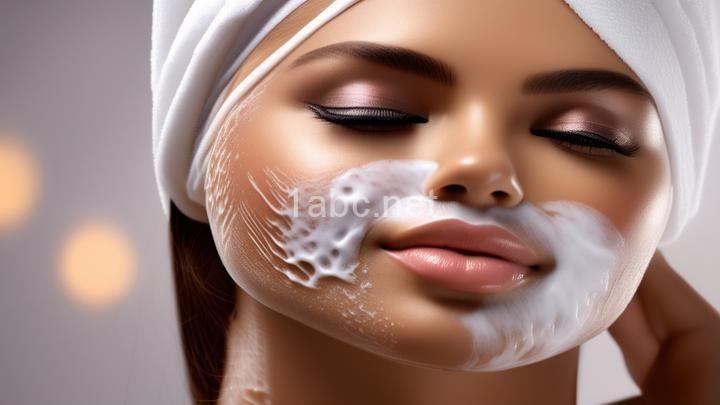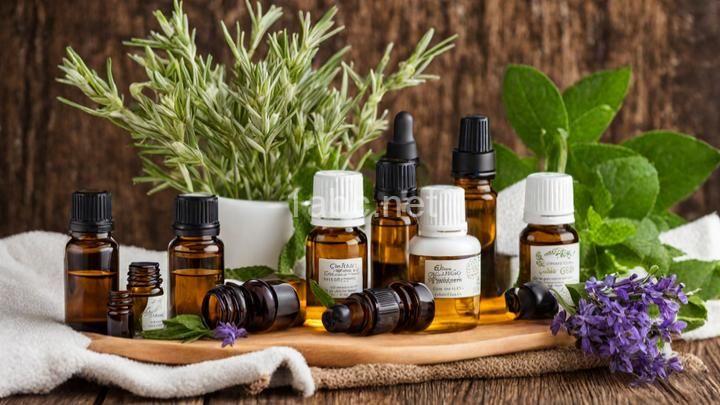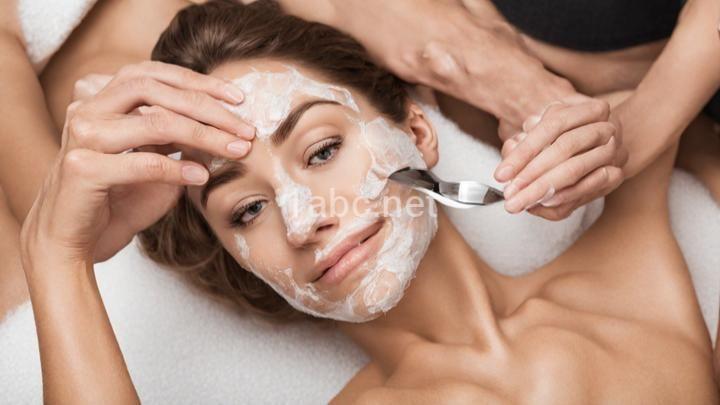Incorporating Exfoliation into Your Skincare Routine: Step-by-Step Guide
Introduction:
Section 1: Understanding Exfoliation
Section 2: Preparing for Exfoliation
Step 1: Know Your Skin Type
Step 2: Patch Test New Products
Section 3: Incorporating Exfoliation into Your Routine
Step 1: Choose the Right Frequency
Step 2: Prepping Your Skin
Step 3: Apply Exfoliant Properly
Step 4: Rinse and Moisturize
Section 4: Post-Exfoliation Skincare Tips
Conclusion:

Introduction:
Welcome to our blog post on incorporating exfoliation into your skincare routine. We understand the importance of having healthy and radiant skin, and exfoliation plays a vital role in achieving that. In this step-by-step guide, we will walk you through the process of exfoliation, including understanding what exfoliation is, preparing for exfoliation, incorporating exfoliation into your routine, and post-exfoliation skincare tips.
Exfoliation has numerous benefits, such as removing dead skin cells from the surface, revealing smoother and brighter skin, improving texture and tone, unclogging pores, and allowing skincare products to penetrate better. By incorporating exfoliation into your skincare routine, you can enhance the effectiveness of your other skincare products and achieve your desired results more quickly.
Section 1: Understanding Exfoliation
To start, let's understand what exfoliation is and how it works. Exfoliation is the process of removing dead skin cells from the surface of your skin. This process helps to reveal fresh, new skin cells underneath, giving you a more youthful and radiant appearance. There are three main types of exfoliants available: physical, chemical, and enzymatic.
Physical exfoliants involve manually scrubbing the skin using granular substances like sugar, salt, or microbeads. These exfoliants work by physically sloughing off dead skin cells. However, they can be abrasive, especially for those with sensitive skin, and can cause irritation if used too aggressively.
Chemical exfoliants, on the other hand, use chemical substances like alpha hydroxy acids (AHAs) or beta hydroxy acids (BHAs) to dissolve dead skin cells. These exfoliants are more gentle and effective at penetrating the skin, making them suitable for various skin types. AHAs are best for surface-level exfoliation, while BHAs are ideal for deep cleaning pores.
Enzymatic exfoliants use natural enzymes, such as papain from papaya or bromelain from pineapple, to break down dead skin cells. These exfoliants are typically gentle and suitable for sensitive skin types.
When choosing an exfoliant, it is crucial to consider your skin type and sensitivity. For example, those with dry skin may benefit from chemical exfoliants as they provide hydration while removing dead skin cells. Oily or acne-prone skin may benefit from BHAs, as they penetrate pores and help regulate sebum production. Combination or sensitive skin may require more gentle exfoliation, such as enzymatic or low-concentration chemical exfoliants.
Section 2: Preparing for Exfoliation
Before diving into exfoliation, there are a few essential steps to prepare your skin properly.
Step 1: Know Your Skin Type
Determining your skin type is crucial in selecting the right exfoliant for your skin. Here are some simple characteristics to help you identify your skin type:
- Dry skin: Feels tight, rough, or flaky. May have visible fine lines or dry patches.
- Oily skin: Shiny, greasy, and prone to acne or clogged pores.
- Combination skin: Oily in the T-zone (forehead, nose, and chin) and normal to dry in other areas.
- Sensitive skin: Easily irritated, prone to redness, and reacts to many skincare products.
Once you have determined your skin type, you can select the appropriate exfoliant to avoid irritation or over-drying.
Step 2: Patch Test New Products
Regardless of your skin type, it is essential to patch test new exfoliating products before applying them all over your face. Patch testing helps to identify any potential allergic reactions or sensitivities to the product. Here's how to perform a patch test effectively:
- Choose a small area on your forearm or behind your ear for the patch test.
- Apply a small amount of the exfoliating product to the patch test area.
- Wait for 24-48 hours and observe any reactions. If you experience redness, itching, or irritation, avoid using the product on your face.
Section 3: Incorporating Exfoliation into Your Routine
Now that you've prepared your skin, it's time to incorporate exfoliation into your skincare routine. Follow these step-by-step instructions for optimal results.
Step 1: Choose the Right Frequency
Exfoliation frequency varies depending on individual needs and skin type. As a general guideline, most people should exfoliate once or twice a week. However, some may find that exfoliating more frequently (up to three times a week) is suitable for their skin, while others may need less frequent exfoliation (once every two weeks). Listen to your skin and adjust the frequency accordingly.
Step 2: Prepping Your Skin
Before applying the exfoliant, ensure your face is thoroughly cleansed to remove any impurities. Use a gentle cleanser that won't strip away natural oils from your skin. This step is crucial as exfoliating on dirty skin can lead to ineffective exfoliation and potential skin irritation.
Step 3: Apply Exfoliant Properly
When applying the exfoliant, less is more. Use a small amount of product and apply it to your face using gentle, circular motions. Avoid applying too much pressure or scrubbing aggressively, as this can cause micro-tears in the skin. Be mindful of delicate areas such as the eye area and lips; these areas may require a more gentle touch or a separate exfoliant specifically formulated for sensitive areas.
Step 4: Rinse and Moisturize
After gently massaging the exfoliant onto your skin for about one minute, rinse off thoroughly with lukewarm water. Make sure to remove all traces of the exfoliant to prevent any potential irritation. Immediately after exfoliating, apply a hydrating moisturizer to replenish the skin's moisture barrier. This step is crucial to maintain the skin's hydration levels and prevent dryness or skin tightness.
Section 4: Post-Exfoliation Skincare Tips
After exfoliation, it is essential to take some extra precautions to protect your skin and optimize the results.
- Avoid direct sunlight: Exfoliating can make your skin more sensitive to UV rays. It is crucial to minimize sun exposure, especially immediately after exfoliating. If you need to be outdoors, wear a broad-spectrum sunscreen with an SPF of 30 or higher to protect your skin.
- Use soothing and hydrating skincare products: After exfoliation, your skin may benefit from soothing and hydrating ingredients. Look for products that contain aloe vera, hyaluronic acid, or ceramides to replenish hydration and calm any potential irritation.
Conclusion:
Incorporating regular exfoliation into your skincare routine is a game-changer. By understanding what exfoliation is, preparing your skin properly, following the right exfoliation techniques, and taking post-exfoliation skincare precautions, you can achieve healthier and more radiant skin. Remember to choose the right exfoliant for your skin type, patch test new products, and adjust the frequency of exfoliation based on your individual needs. Thank you for reading our step-by-step guide, and we hope you have found it helpful. For more skincare-related articles, explore our blog further and discover more tips and tricks to enhance your skincare routine.
FREQUENTLY ASKED QUESTIONS
Why is exfoliation important for my skincare routine?
Exfoliation is important for your skincare routine because it helps remove dead skin cells, unclog pores, and promote cell turnover. By sloughing off the top layer of dead skin cells, exfoliation can help improve the texture and tone of your skin, giving it a smoother and brighter appearance. It also allows your skincare products to penetrate more effectively, increasing their overall efficacy. Regular exfoliation can help prevent breakouts, minimize the appearance of fine lines and wrinkles, and even out skin discoloration. However, it's important to note that over-exfoliation or using harsh exfoliants can damage the skin, so it's necessary to choose the right exfoliation method and frequency based on your skin type and sensitivity.
How does exfoliation benefit my skin?
Exfoliation offers several benefits for your skin:
- Removes dead skin cells: Exfoliating helps slough off dead skin cells from the surface of your skin, revealing smoother and brighter skin underneath.
- Promotes cell turnover: By shedding dead skin cells, exfoliation stimulates the regeneration of new skin cells, which can improve the overall texture and appearance of your skin.
- Unclogs pores: Regular exfoliation can help remove dirt, oil, and other impurities that can accumulate in your pores, leading to fewer breakouts and reduced congestion.
- Enhances product absorption: Exfoliating your skin allows for better absorption of moisturizers, serums, and other skincare products, as they can penetrate deeper into the skin.
- Improves skin tone: Exfoliation can help even out your skin tone by reducing the appearance of hyperpigmentation, dark spots, and uneven areas.
- Boosts collagen production: Some exfoliation methods, such as chemical peels or microdermabrasion, can stimulate collagen production, which can help improve skin elasticity and reduce the appearance of fine lines and wrinkles.
Remember to choose the right exfoliation method and frequency based on your skin type and sensitivity to avoid potential irritation or over-exfoliation.
How often should I exfoliate?
The frequency of exfoliation depends on your skin type and the type of exfoliation method you're using. As a general guideline, it's recommended to exfoliate 1-2 times per week for most skin types. However, if you have sensitive skin or are using a more intense exfoliation method, like chemical peels or exfoliating brushes, you may need to exfoliate less frequently, such as once every two weeks. It's important to pay attention to how your skin reacts and adjust the frequency accordingly to avoid irritation or over-exfoliation.
What are the different types of exfoliation methods?
There are several different types of exfoliation methods that can be used to remove dead skin cells from the surface of your skin. Some common types of exfoliation include:
- Physical exfoliation: This method involves physically scrubbing the skin with abrasive particles or tools, such as facial scrubs, brushes, or exfoliating gloves.
- Chemical exfoliation: This method involves using chemical compounds, such as alpha hydroxy acids (AHAs) or beta hydroxy acids (BHAs), to dissolve dead skin cells and reveal fresher skin underneath. Chemical exfoliation can be done through peels, serums, or cleansers.
- Enzymatic exfoliation: This method involves using natural enzymes, typically derived from fruits like papaya or pineapple, to break down dead skin cells without the need for physical scrubbing. Enzymatic exfoliants are often found in masks or exfoliating cleansers.
- Microdermabrasion: This is a non-chemical, non-invasive procedure that uses a diamond-tipped wand or a stream of microcrystals to exfoliate the outermost layer of skin. It can be done at a dermatologist's office or through at-home devices.
Remember, it's important to choose an exfoliation method that suits your skin type and sensitivity level. If you have any concerns, it's always a good idea to consult with a dermatologist or skincare professional.


